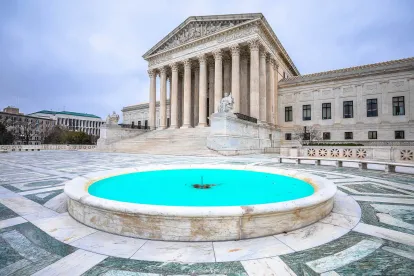On May 25, 2023, the Supreme Court introduced a new test to determine whether wetlands are subject to Clean Water Act regulation - the “continuous surface connection” test – and in doing so rejected the seventeen-year-old “significant nexus” test from Rapanos v. United States. In Sackett v. Environmental Protection Agency (2023), the Supreme Court held that the Environmental Protection Agency (EPA) improperly classified wetlands on the Sackett property that was near a ditch that fed into a creek, which fed into a lake, as subject to the Clean Water Act (CWA) because the wetlands were not “continuously connected” and “indistinguishable” to any possibly covered waters of the United States (WOTUS).
Writing for the majority, Justice Alito authored this new “continuous surface connection” test holding the CWA extends only to streams, oceans, rivers, lakes, and those wetlands that are “indistinguishable” from those larger bodies of water by having a “continuous surface connection.” Essentially, where the CWA previously included adjacent wetlands, this new, narrower interpretation only covers adjoining wetlands.
This decision settles the uncertain meaning of “waters of the United States” subject to the CWA, which the Court described as “a persistent problem, sparking decades of agency action and litigation.” Based on prior Supreme Court decisions, the EPA and US Army Corps of Engineers – the agencies responsible for administering the CWA – determined what wetlands constitute waters of the United States by engaging in a fact-intensive “significant nexus” test, which reviewed whether the wetland in question significantly affected the chemical, physical, and biological integrity of traditionally regulated waters such as streams, rivers, lakes and oceans. In its recent Sackett decision, the Supreme Court did away with the “significant nexus” test, finding its “lengthy list of hydrological and ecological factors” too open-ended and resulting in “nearly all waters and wetlands [being] potentially susceptible to regulation, putting a staggering array of landowners at risk of criminal prosecution for such mundane activities as moving dirt.” In overturning the significant nexus test, the Court announced a clear definition of wetlands subject to CWA regulation: “The CWA extends only to wetlands that are as a practical matter indistinguishable from waters of the United States. This requires the party asserting jurisdiction to establish first, that the adjacent body of water constitutes ‘waters of the United States’ (i.e., a relatively permanent body of water connected to traditional interstate navigable waters); and second, that the wetland has a continuous surface connection with that water, making it difficult to determine where the ‘water’ ends and the ‘wetland’ begins.”
The impact of this decision will likely be felt most by developers, mining companies, and those in the energy and construction industries who need Section 404 CWA permits to impact federally protected wetlands. This decision will also likely impact the Biden Administration’s new definition of “wetlands,” a rule that was promulgated earlier this year to try and provide clarity on which wetlands and streams are subject to CWA permitting.
While it is unclear exactly how this new “continuous surface connection” test will be applied, it will certainly curtail EPA’s authority over wetlands, and it is less likely developers will need a permit to impact certain wetlands. EPA already announced it will “carefully review” the ruling and “consider next steps,” which will likely consist of new rulemaking based on this decision.




 />i
/>i

